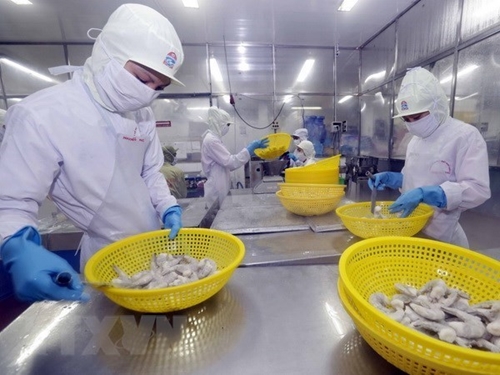VASEP said the shrimp sector would make a breakthrough in exporting to 28 European Union countries as the nation will enjoy low import tariffs once the EU-Vietnam Free Trade Agreement takes effect for an estimated export value of USD 1 billion.
According to VASEP, 2018 ended with shrimp exports failing to meet the business targets. They reached USD 3.55 billion, down 7.8 percent from the previous year.
    |
 |
|
Vietnam’s shrimp exports are expected to increase to more than USD 4 billion in 2019. |
The shrimp industry targeted to gain an export value of USD 4.8 billion in 2018 due to the many advantages of exports promotion. These advantages from existing mechanism and policies include a program on sustainable development of the fisheries economy during 2016-2020.
However, shrimp demand of large markets such as the US and Canada decreased due to weather and high inventory volume in Japan, the Republic of Korea and the EU. Domestic prices in the second quarter fell by between 20 and 30 per cent, affecting the local market and export value.
At the end of last year, world shrimp prices fell. The supply from shrimp-producing countries such as India, Thailand and Indonesia increased, while inventory in the US was high, meaning Vietnam could not boost exports to this market.
Inventories in India, Ecuador and Indonesia also increased after China tightened the export of shrimp via informal cross-border gates.
In 2018, Vietnam’s shrimp exports to its four main markets declined from the previous year. The value of exports to China dropped by 28 percent; Japan fell by 9.2 percent. Exports to the EU and the US were down by 2.8 percent and 3.3 percent, respectively. The exports to the Republic of Korea and Canada saw slight increases of 1 percent and 3.5 percent, respectively.
The EU was still the largest market for exported Vietnamese shrimp, accounting for 23.6 percent of exports with a value of USD 838.3 million.
White-leg shrimp continued to occupy a key position in the market, accounting for 68.7 percent of shrimp exports, while tiger shrimp accounted for 23 percent and other types of shrimp 8.3 percent.
Source: VNA